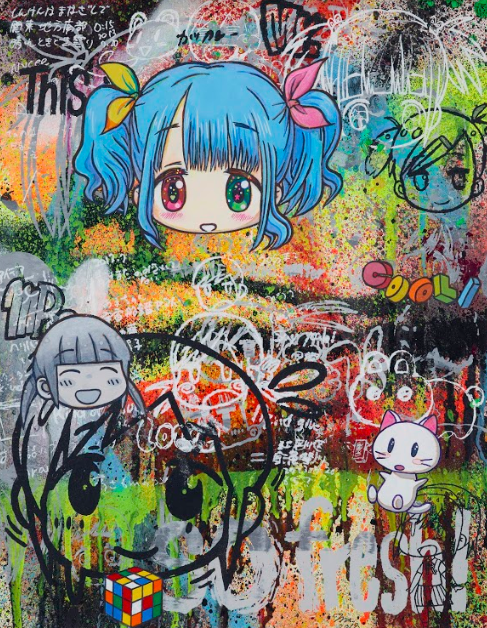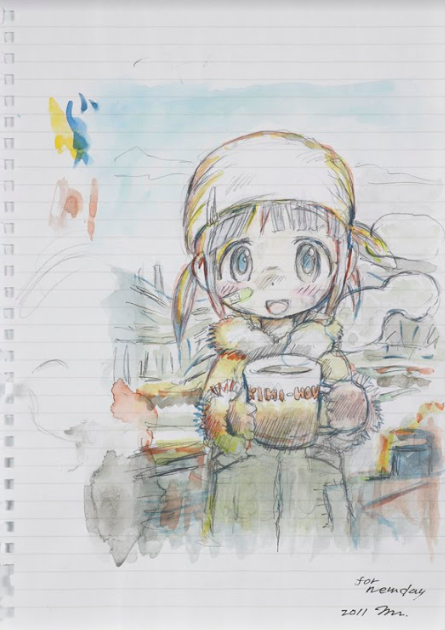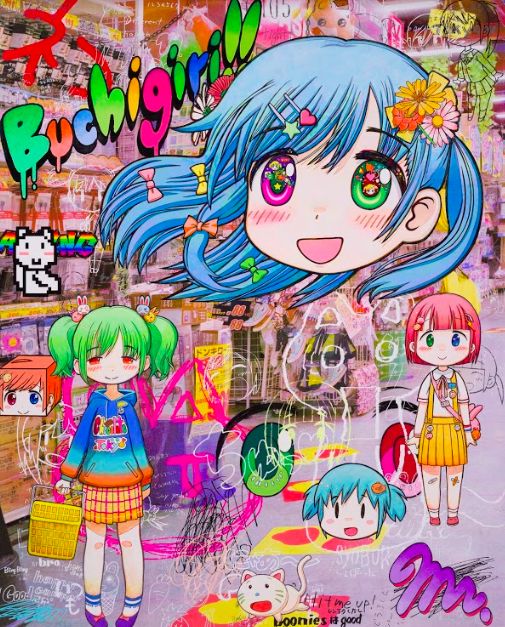When most of us take an iPhones photo of our neighborhood, it usually just stays on our phone (or maybe lands on Instagram). But when the Japanese artistMr. takes snapshots in Tokyo, they become an imaginary world for anime characters.Mr., (whose real name is Masakatsu Iwamoto), is showing new work at Perrotin gallery in Paris until March 9. His new exhibit Melancholy Walk Around the Town looks at how Tokyo is the root of the artist’s anime inspiration.
Advertisement
“I carry an iPhone or a high-definition digital camera with me and take photographs of the scenery of the city, alleyways, shops, trash on the roadside and use them as materials,” said Mr. “I put together elements found in the ordinary scenery that I routinely come across and construct them into paintings.”
View of the exhibition “Mr.’s Melancholy Walk Aroundthe Town” at Perrotin Paris. Photo: Claire Dorn, ©2019 Mr./Kaikai Kiki Co., Ltd. All Rights Reserved.Courtesy Perrotin
For this exhibition, Mr. focuses on highlighting the neighborhoods of Akihabara and Ikebukuro, the central districts for otaku culture. This is where manga fans troll the graffiti-drenched streets in cosplay. It’s also home to the biggest Pokémon megastore, maid cafes (where waitresses dress up like French maids) and anime shops, making it the epicenter of kawaii.“I have loved Japanese anime and manga from the beginning,” said Mr. “I am fond of how Akihabara and Ikebukuro are packed with stores specialized in these districts, which are filled with multiple-tenant buildings, giving a cluttered, neo-futuristic, downtown feel.”The paintings here are fixed squarely on hair dye, basically. Each character has either a rainbow-hued bobs, pink pigtails or a blue mane. They all stand before backdrops of banal streets Mr. has shot in passing—convenient stores, newsstands and grocery stores—which are covered with bizarre graffiti-style phrases (“You can do it!”), Instagram likes and app icons.

A look closer reveals icons in the eyes of each character. The glistening, oversized eyeballs of each girl tells a whole separate story; a kind of inner world, or a crystal ball.
Advertisement
“I think of them as a kind of a mirror reflecting the world,” said the artist. “From one point, I started painting girls’ eyes in a way that they seem to have a reflection of something, and since then, I cannot paint eyes without any reflection. There must be something reflecting in the eyes of the girls I paint.”In one girl’s eyes, the word ‘Tokyo’ is written alongside a collection of neatly-arranged trash. Another eyeball shows hearts, candy and chocolate with bubble tea. Another has a pixelated cat and a Chrome icon.The artist made his foray into the art world in 1996 after working as an assistant to Takashi Murakami. Mr. gained popularity in the early 2000s when he was included in a number of anime-themed group shows. Though Murakami was already doing his insane manga-inspired art, Mr. helped convince the art world anime was more than a one-man circus. It was an entire genre that would soon keep a foothold in the white box. Mr. helped usher in an entire roster of anime-inspired contemporary artists, like Yoshitomo Nara, Chiho Aoshima and Aya Takano (who looks at anime through the female gaze). Just as Murakami’s career exploded level after his collaboration with Kanye West, Mr.’s work hit the mainstream when he animated the “It Girl” music video for Pharrell Williams in 2014 (yes, Pharrell was posing for selfies at the opening last week in Paris).

But this exhibition pays homage to the roots of the manga subculture, long before it became mainstream. Anime has changed since Astro Boy came on the silver screen in the 1950s, and since Akira got a cult following in the 1980s and in the 1990s, when over 100 TV shows—from Pokémon to Dragon Ball Z and Sailor Moon—made their way to international audiences. To Mr., who has watched anime burst into the mainstream, it’s slightly sad it’s no longer a subculture.
Advertisement
“Over the past 10 years, anime and the otaku population has grown,” he said. “I feel that the image of them being the minority has significantly vanished.”But he explains that the proliferation of anime culture is not entirely a bad thing, either. “Back in the day, there was such a climate that otaku culture was educationally bad, anime wasn’t allowed because of the educational beliefs of Japanese parents,” he said.Now, it’s become so big that it can’t be ignored. “About 30 years ago, I personally used to wish for a better understanding of the otaku culture,” he said, “but as soon as this culture has become mainstream, an enigmatic sense of loss emerged inside of me.”

That loss can be traced in his latest work, which ranges from kawaii (cute) to kowai (scary) through the spectacle of Tokyo’s lonely streets. Here the characters seem lost, confused or shocked. What makes Mr.’s artwork different than any other fanboy is that he bridges a familiar aesthetic with an unlikely twist; he has characters in wheelchairs and camouflaged girls fighting in an army.One could easily see Mr. as the Nabokov of the art world, having spent an entire career painting girls. But in the wake of #MeToo, he has toned down the lolicon aspects of his work for something more G-rated. He also claims that in Japan, women are more powerful than men, one reason he will keep at it.“Painting women barely bores me,” he said. “I feel I can keep painting them throughout my life, and I think even historically, for some reason, artists have significantly kept painting women.”
